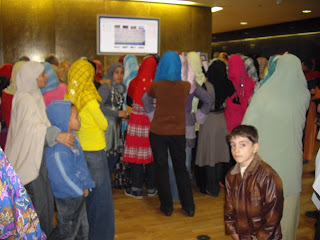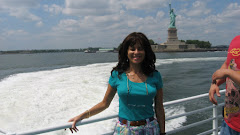








Today, we explored Alexandria, Egypt’s 2nd largest city founded by Alexander the Great in 332BC.
This city, brought to life in history and film classes, is a modern city that continues to excavate layers of its former (ancient) civilizations buried beneath it.
Alexandria formerly houses one of the 7 wonders of the ancient world, The Pharos lighthouse. Unfortunately, it was destroyed by a series of earthquakes in the 12th and 14th centuries. Standing in its place is the imposing Fort Qaitbey, built in the 1480s by Sultan Qaitbey. From its elevated position, set back from the grand cornice (long waterfront walkway) the fort has fantastic views of Alexandria and out to sea. This was our first stop.
Next, we headed along the corniche, passing lots of seafront resort hotels, to the Montazah Palace and gardens, the summer home of the royal family.
Pompey’s Pillar and the Temple of Serapris ruins were next. Destroyed by Christians as they commonly destroyed pagan temples, the only part of the temple still standing is one of the pillars, known (incorrectly) as the Pillar of Pompey. We explored the impressive, fully preserved, intricate network of subterranean galleries (long dark passageways) with side chambers that housed statues of Gods, tools and equipment, food, and even the tombs of the revered Apis bulls. These ancient underground galleries survived destruction by the Christians and multiple earthquakes over the years.
Lunch was delectable seafood at a waterfront restaurant.
The highlight of the tour was the Alexandria Library and Cultural Center. More than a library that seats 2000, the modern new complex houses museums of antiquities and photography, a planetarium, a science museum, a children’s wing, and even a museum of the life of Anwar Sadat. His museum contains personal artifacts from his home, his office, medals, documents, photos, uniforms, his pipe, and even the suit he was wearing when he was assassinated in 1981.
Striking in its architecture, the main library is encased in a giant cylindrical building at the northern end of the waterfront. The circular outer wall is made of Aswan granite engraved with letters from world alphabets. The roof which tilts toward the sea is designed to angle sunlight onto the desks of the 7-tier 2000-seat reading rooms. The library contains 8000 volumes, none of which, however, can be checked out. You can download 25% of a volume in 4 sittings in order to read an entire book.
There is also a vast online collection. I will get to know this library better when I return home.
Of course, this library was constructed to commemorate the 3rd century BC library that had been the finest in the ancient world, before it was destroyed by fire.
The last stop on our tour was the Roman Ampitheatre. It was discovered (uncovered) beneath the rubble of a construction project in 1965. Can you imagine living in a city where they stumble upon centuries-old ruins with intact mosaic floors from the 2nd century AD?
We had a great 2 days in Cairo and Alexandria!






.jpg)
.jpg)




No comments:
Post a Comment